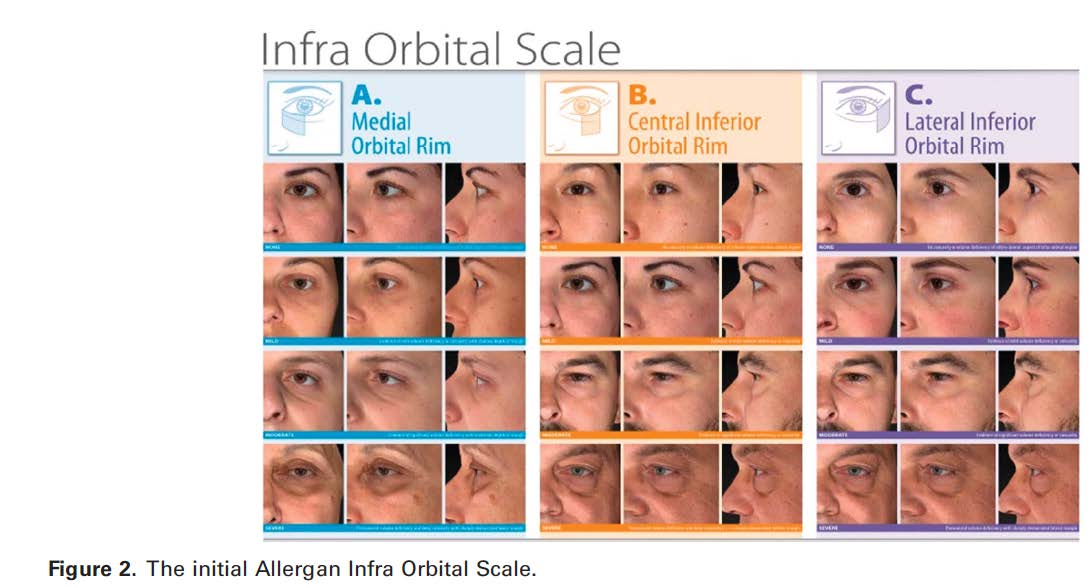Pharmascan (Dermscan Group) participated in a 9 months’ study to develop a practical photonumeric scale that respects the complex anatomy and age-related changes occurring in the orbital area.
It was a very interesting and innovative experience for Pharmascan to participate in the creation of a scale that is now published! Indeed, you can find the details of this study in a scientific publication © 2017 by the American Society for Dermatologic Surgery, Inc. Published by Wolters Kluwer Health, Inc. where Dermscan is quoted.
Eyes are one of the main aesthetic features of the face. Orbital region tells a lot about ageing especially when volume loss, skin laxity and hyperpigmentation increase. Actors of the health and beauty industry such as Allergan, our sponsor for this study, work on revitalisation of the infraorbital region. More and more popular dermal fillers or structural fat grafts are solutions to this volume reduction issue.
The only published infraorbital scales used to be only descriptive, subjective, or related to computer-generated images. Thus, we helped to develop a validated scale based on actual images was essential.
We contribute to develop photonumeric scale using both live subjects and 3D photographs in collaboration with Canfield, to assess infraorbital skin depressions. To be easily used in the clinic to guide treatment strategies / assess treatment response and also in clinical trials, this scale had to be simple and practical.
16 physicians comprising 8 plastic surgeons, 4 dermatologists, and 4 aesthetic physicians worked together to develop the Allergan Infra-oRbital Scale (AIRS).

Pharmascan recruited almost 300 male and female volunteers. They were more than 18 years old, had various skin types (Fitzpatrick skin Types I–VI) and meet a range of right and left infraorbital volume loss severity based on AIRS descriptors.
Frontal, oblique, and profile images of the volunteers were taken following standardised protocol and 3D photographic techniques.
A 1st AIRS scale was developed with the most significant pictures corresponding to 4 anatomical descriptions. However, as the percentage of agreement between the different raters wasn’t satisfying enough, a revised scale was created.

Few protocols adjustments were put in place and the number of descriptions increased from 4 to 6, ranged from 0 to 5 to describe the volume deficiency progression across the infraorbital region in greater detail: “For the revised AIRS, the online and live validations were comparable, both showing strong to almost perfect agreement for both intrarater and interrater reliability. Thus, the revised AIRS (Figure 3) was considered valid for rating both live subjects and photographic images.”
Thanks to the collaboration of Pharmascan, Canfield and Allergan: “the AIRS can be considered a photonumeric scale that accurately describes volume loss in the infraorbital region. It has been validated and is appropriate for use in research or for everyday clinical use for both live and photographic assessment.”
You have a similar project or need more information to assess your:
• Cosmetic products, please click here
• Aesthetic, pharmaceutical or health oriented products, please click here
Complete publication on line:
Niforos F, Liew S, Acquilla R at al.
Creation and Validation of a Photonumeric Scale to Assess Volume Deficiency in the
Infraorbital Region
Dermatologic Surgery. 2017; 43 (5): 684–691.
